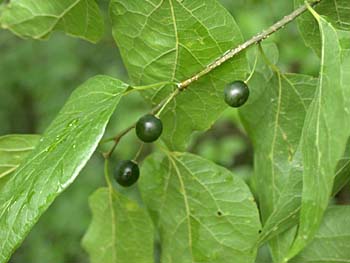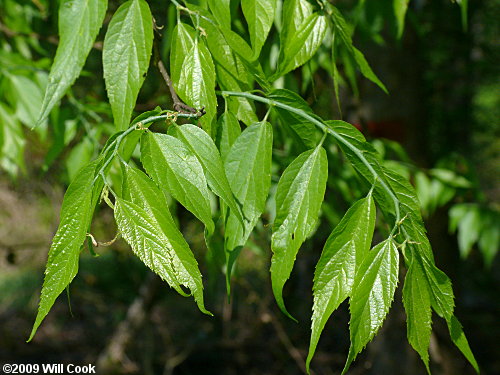
| Sugarberry is a common large overstory tree of bottomland forests, but also occurs in drier areas over calcareous rock (with relatively high pH soil). The similar Common Hackberry (C. occidentalis) and Dwarf Hackberry (C. tenuifolia) also occur in North Carolina, but are less common. These have broader, coarsely toothed leaves that are usually sandpapery above. The leaf bases of the other species are often cordate, while those of C. laevigata are usually cuneate or rounded. Intermediate trees, which may be hybrids, are not rare, which may explain why these species were formerly lumped as varieties of C. occidentalis. Granville Co., NC 4/26/09.
| 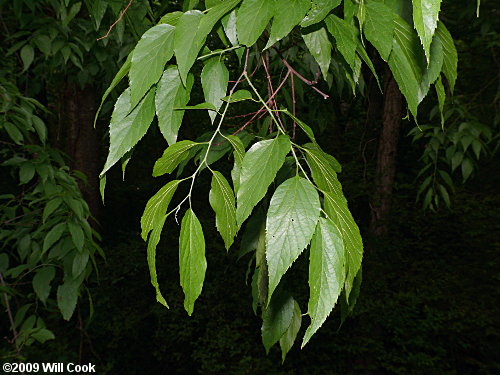
| The leaves are normally easily identified by their elongate, almost triangular shape with uneven bases with three prominent veins and usually few teeth. Chapel Hill, NC 5/2/09.
| 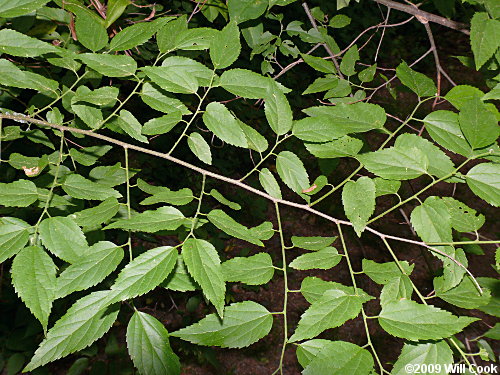
| The branching pattern is distinctive. Chapel Hill, NC 5/2/09.
|
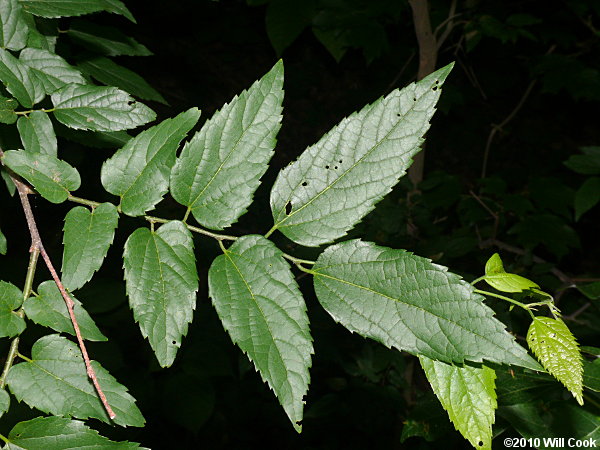
| This individual could be a hybrid. Its leaves were smooth above, but appear intermediate between C. laevigata and C. occidentalis. Caswell Co., NC 5/21/10.
| 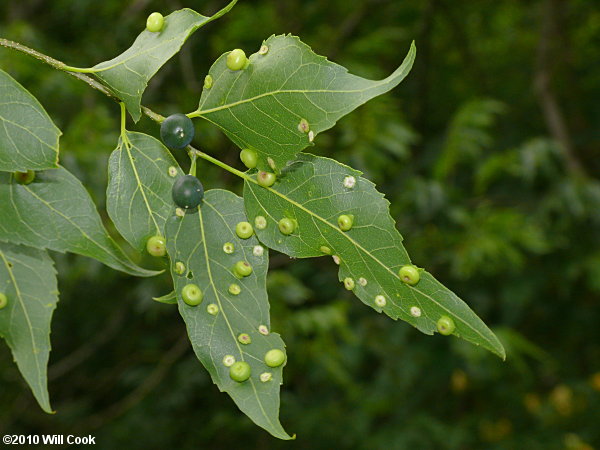
| More typical C. laevigata leaves, covered with galls as they often are. Caswell Co., NC 5/21/10.
| 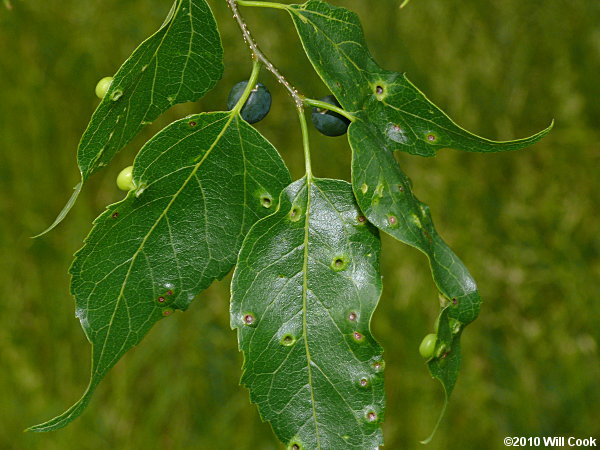
| Same leaves from above. Caswell Co., NC 5/21/10.
| 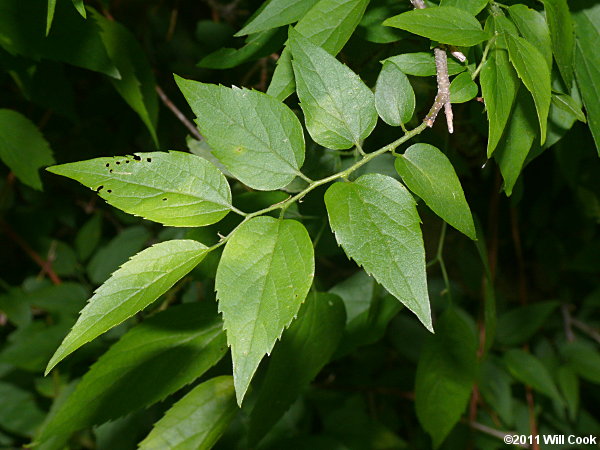
| Granville Co., NC 5/1/2011.
| 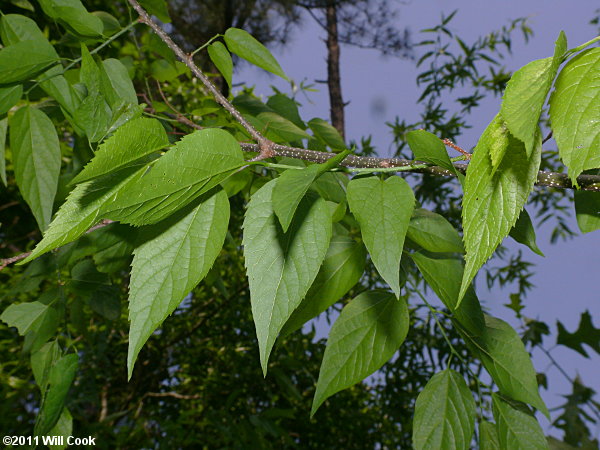
| Granville Co., NC 5/1/2011.
| 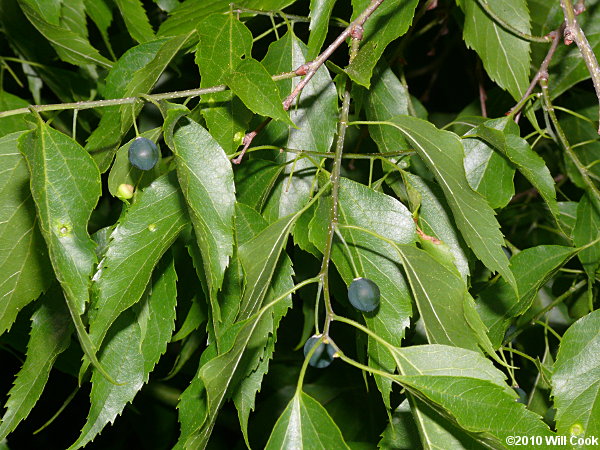
| Ripening fruits. The fruits are drupes, with a large seed encased in a hardened endocarp and surrounded by fleshy mesocarp. Chapel Hill, NC 5/1/10.
| 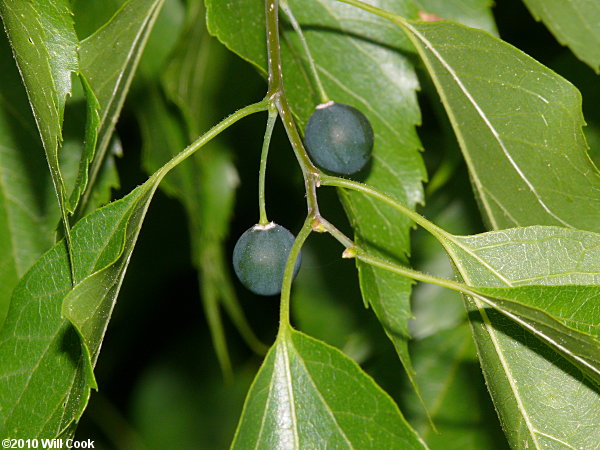
| Chapel Hill, NC 5/1/10.
|
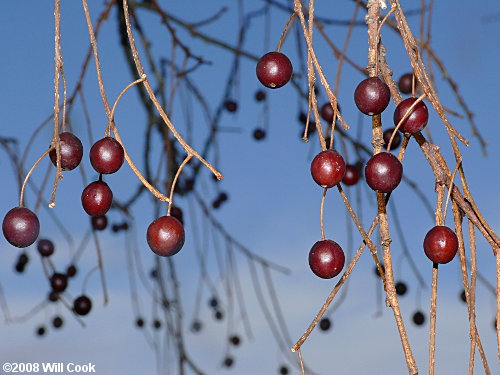
| Ripe drupes are deep reddish-purplish. Durham Co., NC 12/6/08.
| 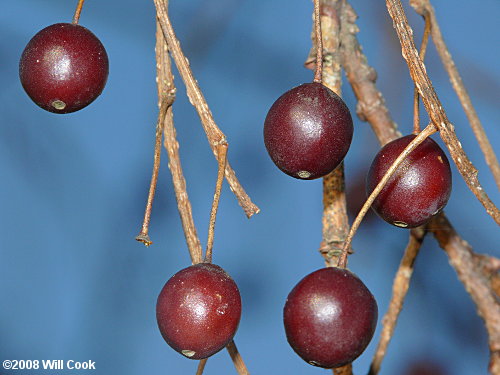
| The fruits are edible and sweetish — the taste is similar to that of dates — but the stone is large and covered by only a thin layer of flesh. The fruits are greatly enjoyed by birds. Durham Co., NC 12/6/08.
|
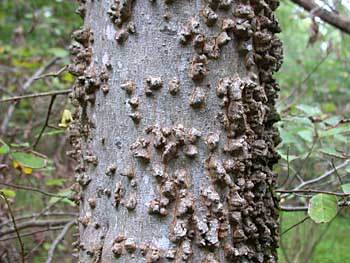
| The bark is usually extremely warty. |
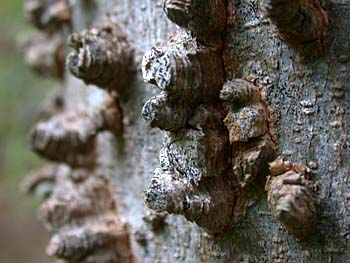
| Bark detail. |
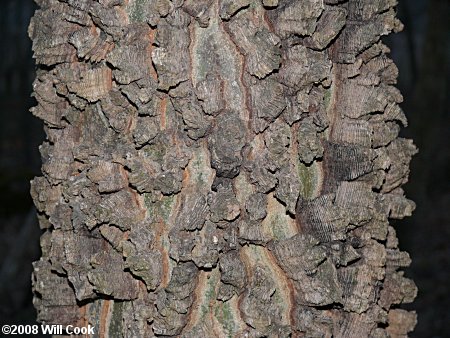
| Bark of a medium-sized tree. An extreme example of wartiness! Orange Co., NC 3/9/08.
| 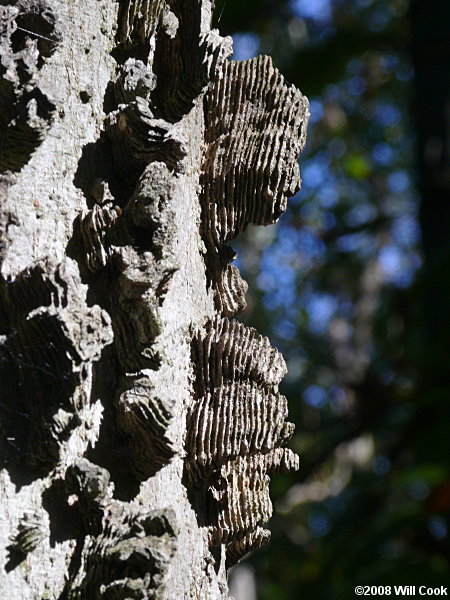
| Durham Co., NC 10/16/2008.
|
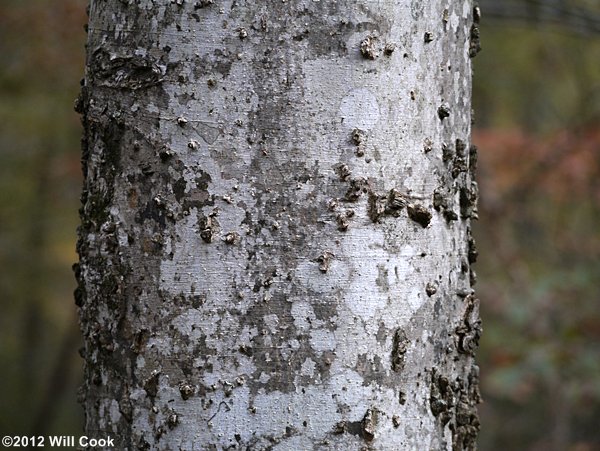
| Orange Co., NC 11/4/2012.
| 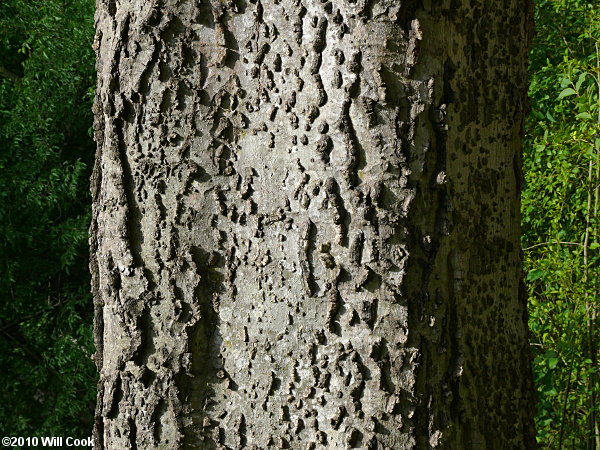
| Bark of a large tree. Chapel Hill, NC 5/1/10.
|
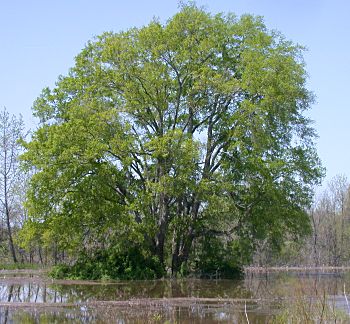
| Large tree in spring. Sugarberry is one of the earlier tree species to leaf out. Durham Co., NC 4/13/2003.
| 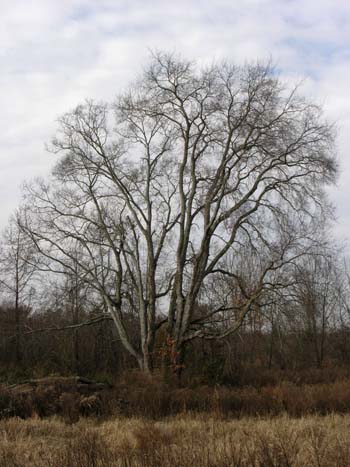
| Large tree in winter (same tree as in photo above). Durham Co., NC 12/4/2005. |
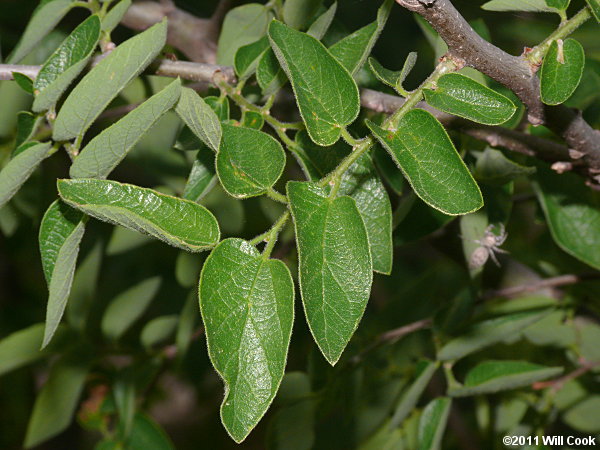
| The Celtis laevigata in central Texas is quite different from the variety laevigata that we have in North Carolina. These are either Texas Sugarberry, Celtis laevigata var. texana Sargent, or Netleaf Sugarberry, Celtis laevigata var. reticulata (Torrey) L.D. Benson. Menard, TX 4/24/2011.
| 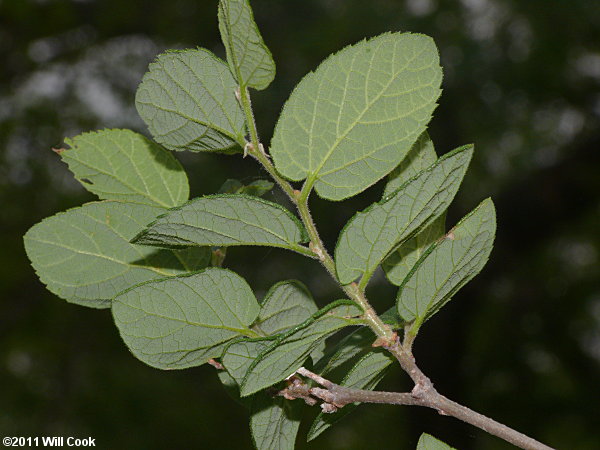
| Menard, TX 4/24/2011.
| 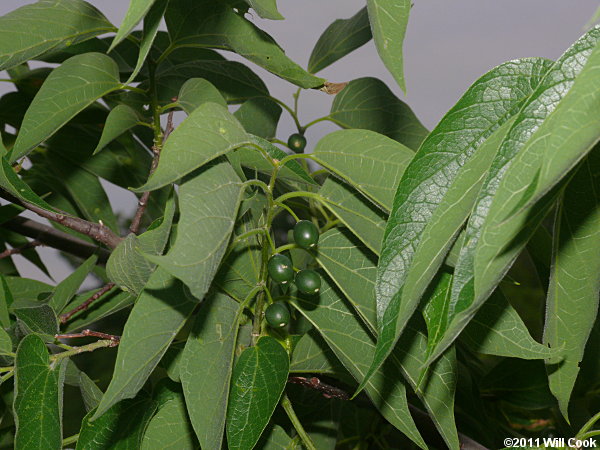
| Menard, TX 4/24/2011.
| 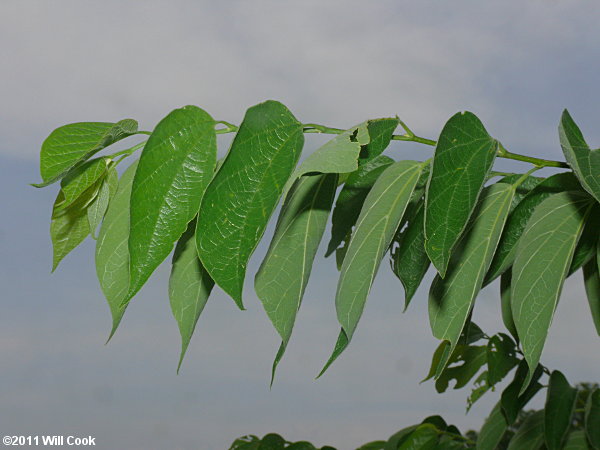
| Menard, TX 4/24/2011.
|
More information:
NC State fact sheet
Trees of Alabama and the Southeast
Virginia Tech Dendrology
Recommended Tree, Shrub, and Woody Vine Identification Guides
|
|










